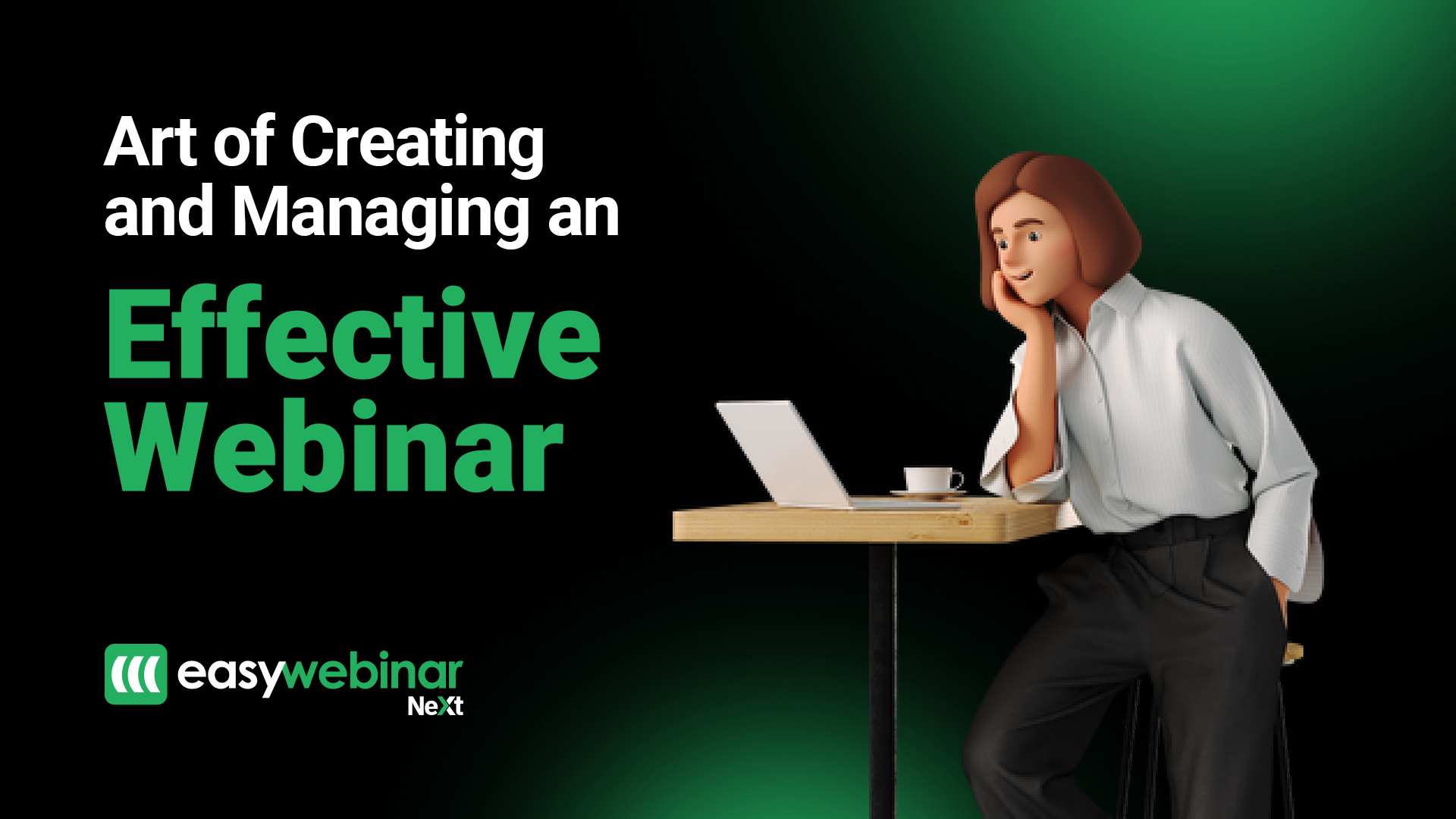Art of Creating and Managing an Effective Webinar

Hey there, fellow content creators, educators, and business enthusiasts! Are you ready to step up your game and harness the power of webinars? In this blog post, we’ll explore the exciting world of webinars, uncover their benefits, and share some tips on creating jaw-droppingly effective online presentations. So, buckle up and get ready to make your webinars shine!
What is a webinar?
So, what exactly is this buzzword “webinar” that everyone keeps talking about? Well, think of it as a captivating virtual seminar or workshop that takes place online. Webinars allow you to connect with your audience, no matter where they are in the world, and deliver valuable content in real-time. It’s like having a front-row seat to an informative and engaging event, right from the comfort of your own home or office!
How do effective webinars work?
To host a killer webinar, you’ll need three key ingredients: captivating content, interactive tools, and seamless technology. First, you need to plan your presentation carefully and make sure your content is relevant, engaging, and well-structured. Whether you’re sharing expert insights, conducting training sessions, or launching a new product, ensure that your message resonates with your target audience.
Next, leverage interactive tools to keep your attendees hooked throughout the session. Polls, Q&A sessions, live chat, and engaging visuals can work wonders in boosting audience participation and creating a lively atmosphere. Remember, the more interactive your webinar, the more memorable and impactful it will be!
Lastly, invest in user-friendly webinar software that offers smooth audio and video streaming, screen sharing capabilities, and easy registration and attendance tracking. The right software will ensure a glitch-free experience for both you and your participants, allowing you to focus on delivering top-notch content.
Advantages and uses of webinar software
Webinar software is like the Swiss Army knife of virtual communication. It opens up a world of possibilities for businesses, educators, and entrepreneurs alike. Let’s explore some of its advantages and diverse applications:
- Reach a global audience: Break down geographical barriers and connect with people from all corners of the world. Expand your reach, grow your network, and establish yourself as an industry thought leader.
- Cost-effective solution: Hosting webinars eliminates the need for travel expenses, venue rentals, and physical resources. You can save time and money while still delivering a compelling and informative presentation.
- Lead generation and engagement: Webinars provide an excellent opportunity to generate leads, nurture relationships with your audience, and gather valuable feedback. By engaging with your attendees in real-time, you can build trust, establish credibility, and convert prospects into loyal customers.
- Training and professional development: Webinars are a fantastic tool for employee training, onboarding new team members, or sharing industry knowledge. Conduct workshops, product demonstrations, or skill-building sessions to empower your workforce.
Tips for creating effective webinars
Now that you’re all set to rock your webinar, here are some practical tips to ensure its success:
- Know your audience: Research your target audience thoroughly to understand their needs, pain points, and interests. Tailor your content to address their specific challenges and provide valuable solutions.
- Engage from the start: Begin your webinar with a bang! Use compelling visuals, intriguing stories, or thought-provoking questions to grab your audience’s attention from the get-go.
- Keep it conversational: Avoid a monotonous lecture-style presentation. Instead, adopt a conversational tone, inject humor, and encourage audience participation throughout. Remember, interactivity is the key!
- Practice makes perfect: Rehearse your webinar multiple times to build confidence, ensure a smooth flow of information, and familiarize yourself with the webinar software. Practice managing your slides, incorporating interactive elements, and managing time effectively.
- Visual aids and multimedia: Use eye-catching visuals, such as slides, infographics, and videos, to enhance your presentation. Visuals not only grab attention but also aid in conveying complex information more effectively.
- Clear and concise messaging: Craft clear and concise messages to keep your audience engaged and avoid overwhelming them with excessive information. Break down complex concepts into digestible chunks, use storytelling techniques, and provide practical examples to illustrate your points.
- Promote and prepare in advance: Promote your webinar well in advance through various channels like social media, email campaigns, and your website. Provide clear instructions on how to register and access the webinar. Send out reminders closer to the date to ensure maximum attendance.
- Follow up and feedback: After the webinar, don’t forget to follow up with your attendees. Share additional resources, recordings, or supplementary materials to reinforce the key takeaways. Also, gather feedback through surveys or post-webinar evaluations to improve future sessions.
- Continuous improvement: Treat each webinar as a learning opportunity. Analyze attendee engagement, feedback, and metrics to identify areas of improvement and refine your webinar strategy. Experiment with new formats, topics, or interactive elements to keep your audience engaged and coming back for more.
Conclusion:
You’re now equipped with the knowledge to create engaging and impactful webinars. Remember, it’s all about connecting with your audience, delivering valuable content, and utilizing interactive tools to keep them hooked. Whether you’re an educator, business professional, or content creator, webinars offer endless possibilities to share your expertise, build connections, and make a lasting impact. So go ahead, plan, practice, and host your next webinar with confidence.
Related: How to Run Your First Webinar and Make Sure It Converts